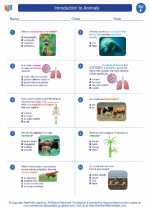What are Mitochondria?
Mitochondria are membrane-bound organelles found in the cytoplasm of eukaryotic cells. They are often referred to as the powerhouse of the cell due to their role in generating adenosine triphosphate (ATP), which is the primary source of energy for cellular activities.
Structure of Mitochondria
Mitochondria have a unique double-membrane structure. The outer membrane covers the organelle, while the inner membrane contains numerous folds called cristae. The space enclosed by the inner membrane is known as the mitochondrial matrix.
Function of Mitochondria
The primary function of mitochondria is to perform cellular respiration, a process that generates ATP by breaking down glucose and other organic molecules. This energy production occurs in several stages, including glycolysis, the citric acid cycle, and the electron transport chain.
Role in Cell Metabolism
Aside from energy production, mitochondria are involved in other metabolic pathways, such as the metabolism of fatty acids and amino acids. They also play a role in regulating cellular metabolism and apoptosis (programmed cell death).
Replication and Inheritance
One fascinating aspect of mitochondria is that they contain their own DNA and can replicate independently within the cell. Additionally, mitochondria are often inherited maternally, as the mitochondria in the fertilized egg are usually derived from the mother's egg cell.
Importance in Health and Disease
Malfunctions in mitochondria can lead to various health disorders, including mitochondrial diseases and age-related conditions. Understanding the structure and function of mitochondria is crucial for studying these diseases and developing potential treatments.
Study Tips
- Review the process of cellular respiration and the role of mitochondria in ATP production.
- Understand the structure of mitochondria, including the double-membrane and the arrangement of cristae.
- Explore the relationship between mitochondria and cell metabolism, as well as their involvement in other cellular processes.
- Consider the implications of mitochondrial dysfunction on human health and its potential impact on various diseases.
- Discuss the inheritance of mitochondria and its significance in genetics and evolutionary biology.
◂Science Worksheets and Study Guides Sixth Grade. Introduction to Animals

 Activity Lesson
Activity Lesson
 Worksheet/Answer key
Worksheet/Answer key
 Worksheet/Answer key
Worksheet/Answer key
 Worksheet/Answer key
Worksheet/Answer key
 Vocabulary/Answer key
Vocabulary/Answer key
 Vocabulary/Answer key
Vocabulary/Answer key
 Vocabulary/Answer key
Vocabulary/Answer key
 Vocabulary/Answer key
Vocabulary/Answer key
